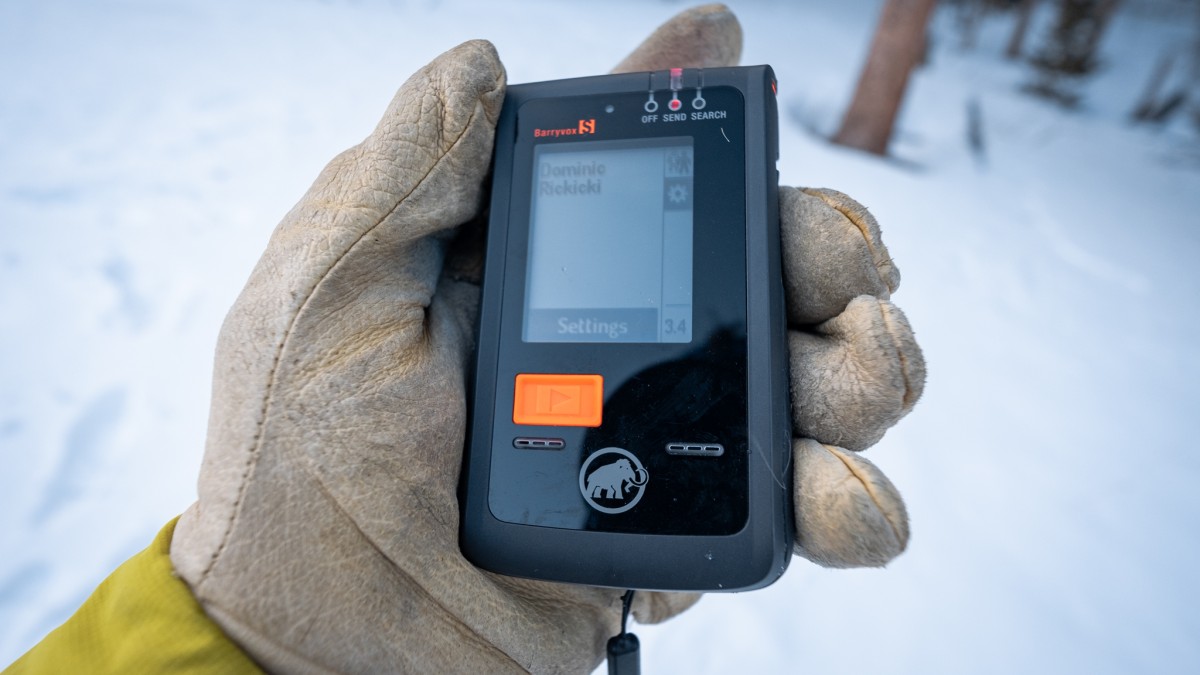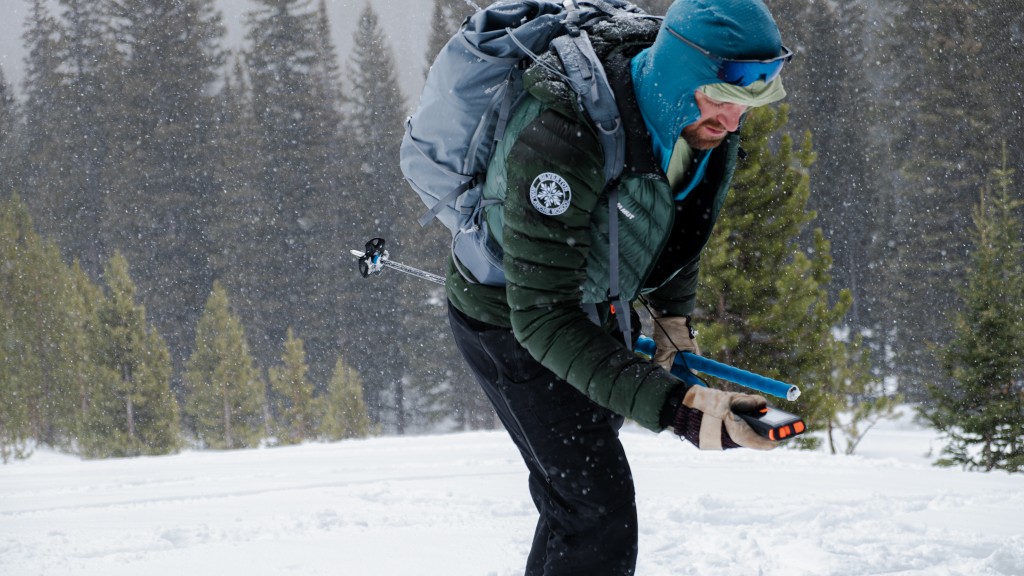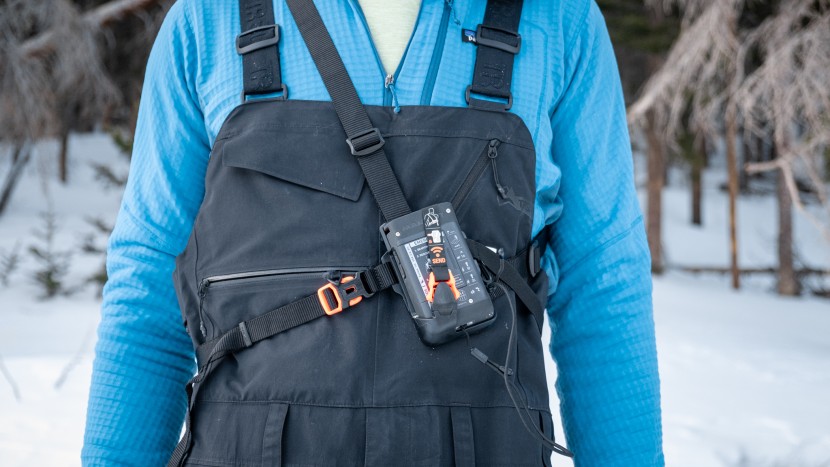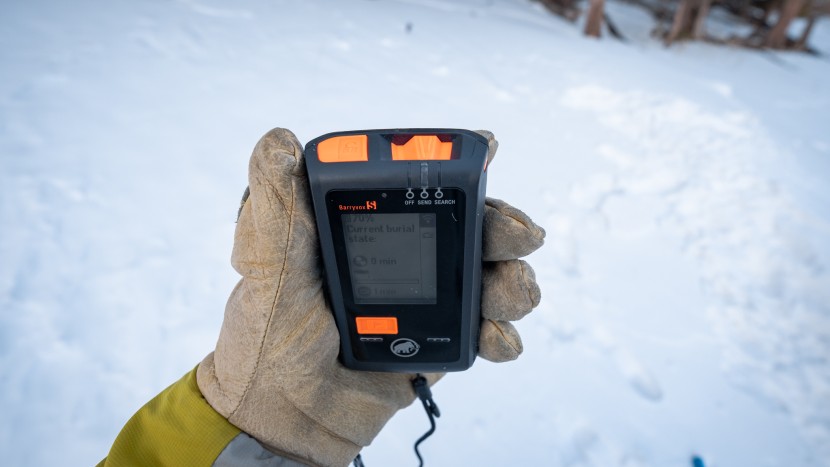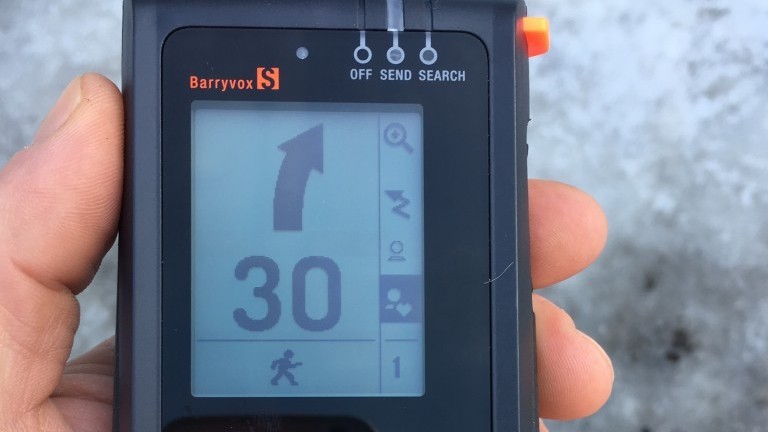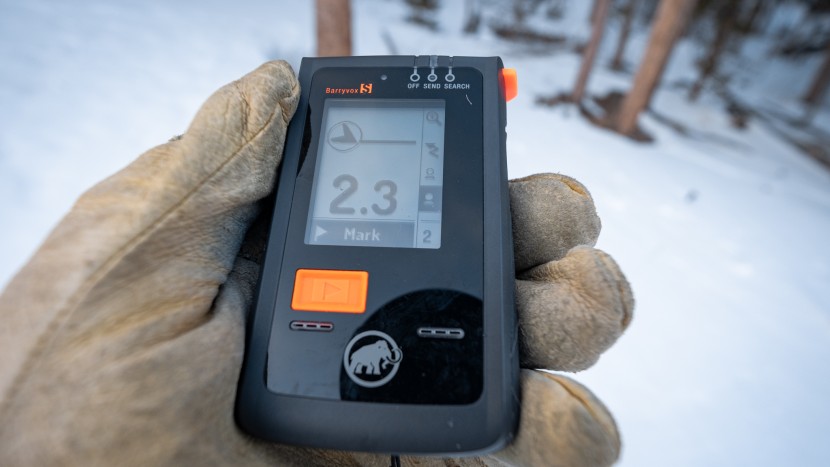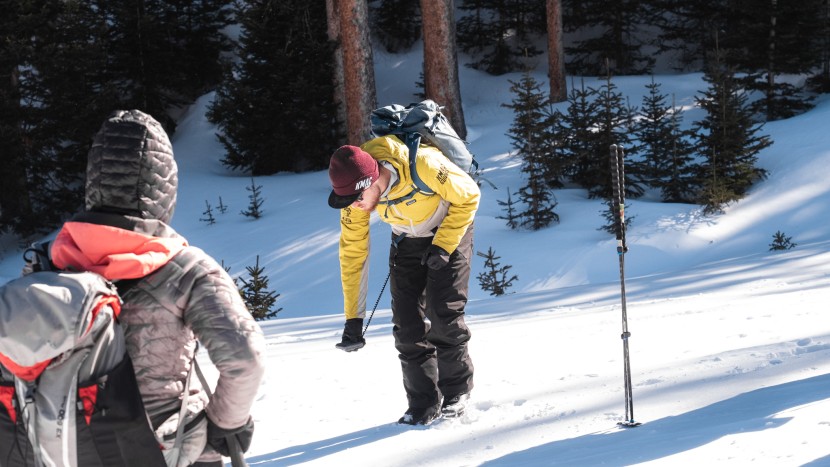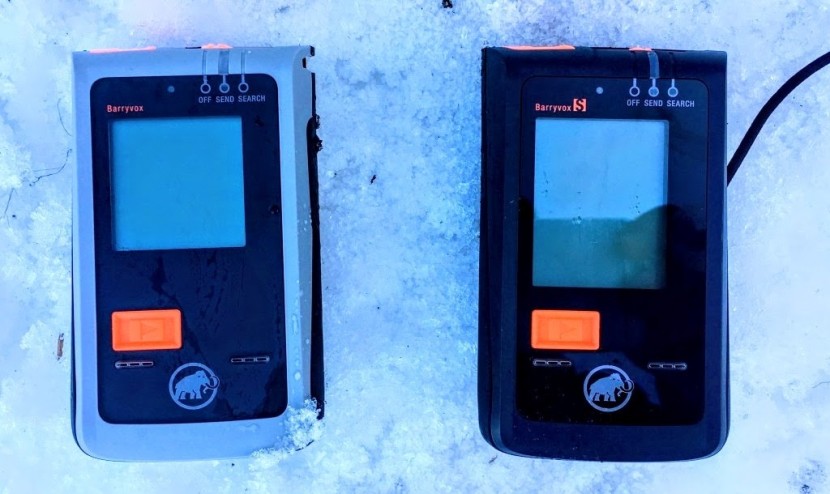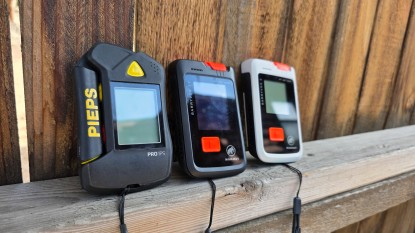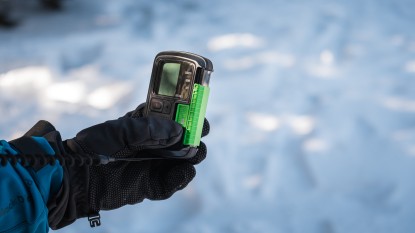
Our Verdict
Our Analysis and Test Results
The Mammut Barryvox S surpassed all other models we tested for solving complex, multiple burial scenarios. Although it improves upon older models with more speed within 10 meters, it isn't quite as easy to use in a fine search as other beacons with faster processor feedback. Still, it's the first beacon we'd choose to use for an AMGA or ACMG ski guide's exam or any other professional-level rescue examination.
Speed
Even though the Barryvox S is not the fastest beacon on the market – a fact we noted mostly in our fine searches – it is adequately fast for any rescue scenario. During the fine search phase, the Barryvox platform takes more time than others to process incoming signals, thus requiring the rescuer to slow down, which isn't necessarily a bad thing. This level of discipline does lead to more accurate results to an extent, but we experienced similar accuracy with faster beacons as well.
In the coarse search phase, we experienced little to no lag with the Barryvox S and were able to follow it into a target at any reasonable pace. With other beacons that have a similarly long range, we sometimes find that the beacon lags at the maximum extent of its range while trying to lock in an accurate measure of distance. The Barryvox S, on the other hand, handled this quite well, as we noticed only small jumps in the distance reading upon first picking up a signal.
Interface
One thing we greatly appreciate about the Barryvox S is that it can be fully controlled from within the device – no device pairing is required to adjust settings. While an app is useful for things like firmware updates, the ability to adjust settings on a transceiver allows you to change preferences while you're practicing with the beacon. This option allowed us to fine tune the Barryvox S perfectly to our liking.
The Barryvox S can be easily manipulated with one hand. The switch on the top locks well into Send and gives us no reason for concern about it accidentally switching out of this position. Switching from Search back to Send is even easier, thanks to a tab that slides out when you flip to Search that you can easily push back in with your thumb. The arrow keys on the side are intuitively located, and the menus are easy to navigate.
Notable Features
The Barryvox S is one of the most stacked options on the market when it comes to features and adjustable settings. Like other pro-level beacons we tested, you can set it up to offer accurate battery life readings for lithium batteries. Mammut's “W-Link” frequency is an additional channel for information sharing and allows for easy management of settings across a fleet of Barryvox S transceivers.
The Revert-to-Send mode, like many other features on the Barryvox S, can be fine-tuned to your preferences. When enabled, it can be set to activate after two or four minutes of inactivity. If you find yourself not moving during a large-scale rescue, the Barryvox S offers a loud warning tone to alert the user 30 seconds before it reverts to Send. Of course, it also includes a Group Check mode, which makes it more efficient to perform a function check before leaving the trailhead. Similar to other high-end models, this beacon includes a very strong signal lock, so enabling the Group Check is recommended. Additionally, there are a few options to use the Barryvox S in an analog mode, which can be incredibly useful in more complex scenarios, especially those involving close proximity burials.
Accuracy
The Barryvox S is among the most accurate beacons in our test. In the coarse search, the directional arrows are steady as opposed to jumpy, which makes them much easier to follow. The distance readings descend predictably without much lag, which helps maintain your pace. As we noted before, the Barryvox S also does a great job of locking into an accurate distance reading, even at the maximum extent of its range.
The lowest readings in the fine search phase were consistently within 25 cm of a probe strike for a target buried up to 1 meter deep – often, we were getting a positive probe strike on our very first attempt. Ultimately, this level of precision comes down to a properly executed fine search, as most of the beacons in our test were in this range. However, the success rate with the Barryvox S was notable.
Multiple Burias
For complex burials and professional examinations, this beacon is pretty tough to beat. The Barryvox S has an excellent signal lock, so the signal doesn't jump around when you're navigating close proximity burials. If you're working on a particularly complex problem and don't want the beacon to lock on as well to a single signal, switching to analog mode allows you to apply advanced rescue techniques.
The marking function on the Barryvox S proved to be the most reliable of any model we tested. While the flagging function itself is very similar to that employed by other top models, the Barryvox S mismarked burials much less often than any other comparable model we tested. A particularly useful feature rare among other beacons is the ability to “go back” and select a beacon the searcher might want to resume looking for in the event of a false strike or some other mistake. The Barryvox S also performed the best in simulated AMGA, ACMG, and Pro Level 1 avalanche rescue scenarios, all of which involve three or more burials with at least two targets buried in close proximity.
Range
Although the range of a beacon isn't everything, the Barryvox S offers one of the longest ranges in our test – and that certainly isn't a bad thing. Under conditions of ideal coupling, Mammut states that the Barryvox S has a maximum range of 70 meters in digital mode and up to 95 meters in analog mode.
Since we rarely encounter ideal coupling – where two beacons are perfectly oriented to one another – our tests are designed to determine the average range in a real-world scenario. We record the distance where a beacon first picks up a consistent signal and average those numbers across all of our tests. We measured an average range of 55 m for the Barryvox S, which is still among one of the best on the market.
Should You Buy the Mammut Barryvox S?
If you are a guide, ski patroller, or other working snow safety professional, there are many good reasons to invest in a Barryvox S. This top-tier beacon performed well in all of our tests – it offers an excellent range, is incredibly accurate, outperforms nearly every other transceiver in multiple burial scenarios, and can be customized to suit your preferences. But if you are a novice user or someone who only occasionally ventures into the backcountry, this expensive model is not only overpriced but it is overkill, as it offers many features that you will likely never need to utilize.
Barryvox S vs. the Barryvox
The Barryvox S is essentially a fully loaded upgrade from the baseline Barryvox. However, not everyone will necessarily benefit from this upgrade. The Barryvox offers standard functionality – including flagging and group check functions – but it doesn't include a menu or offer any settings. Its straightforward design is perfectly suited to novice and advanced users alike. On the other hand, the advanced features and customizable settings of the Barryvox S is overkill for someone fresh off their first avalanche course. Instead, it is designed for professionals and advanced recreational users who might lead a complex rescue effort.
What Other Avalanche Beacons Should You Consider?
The Mammut Barryvox S is an ideal model for guides and other working professionals. We'd also point those folks towards the similarly capable Black Diamond Guide BT or the slightly more affordable Arva Neo BT Pro. But less experienced backcountry travelers will be better served by the user-friendly Black Diamond Recon X, or the particularly affordable Backcountry Access Tracker S.


